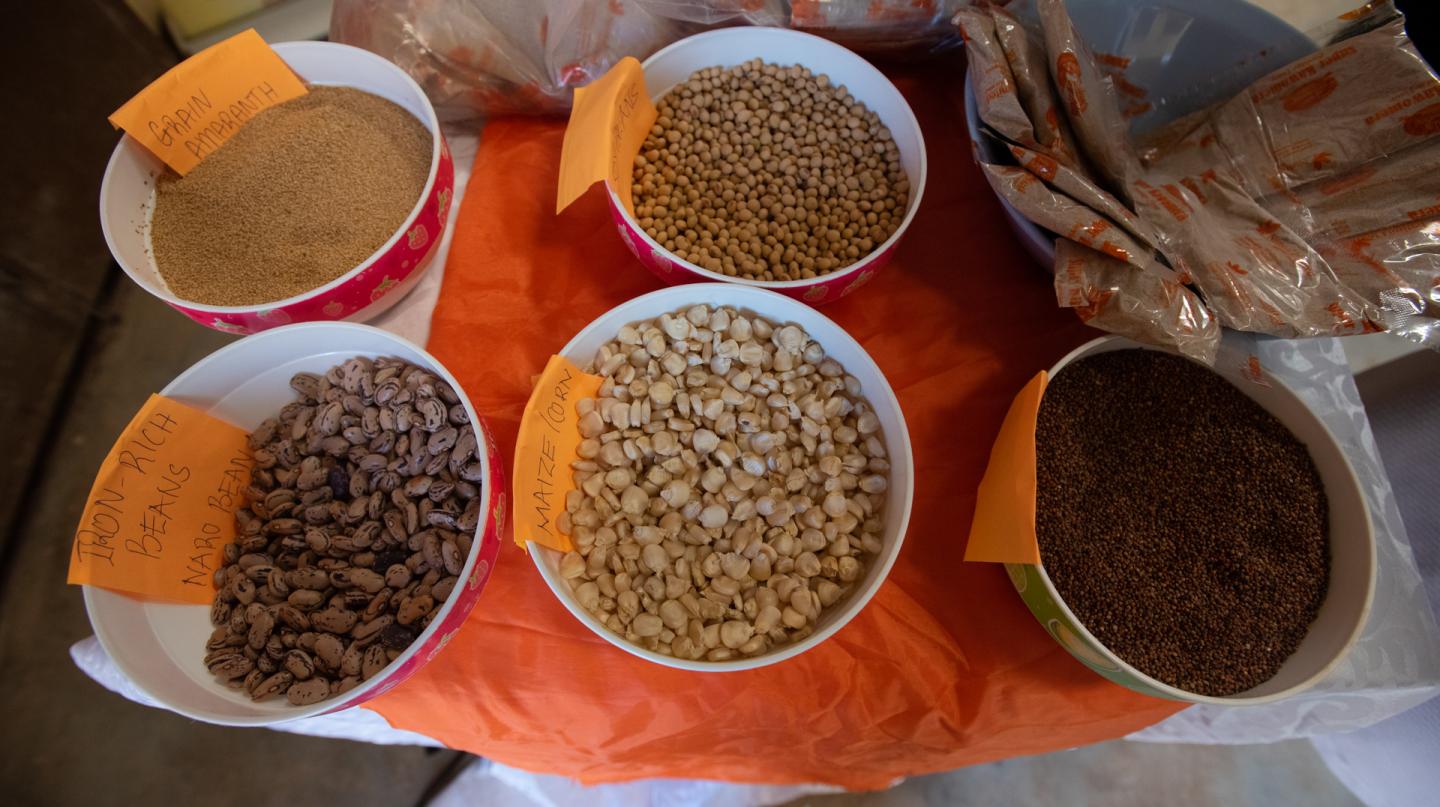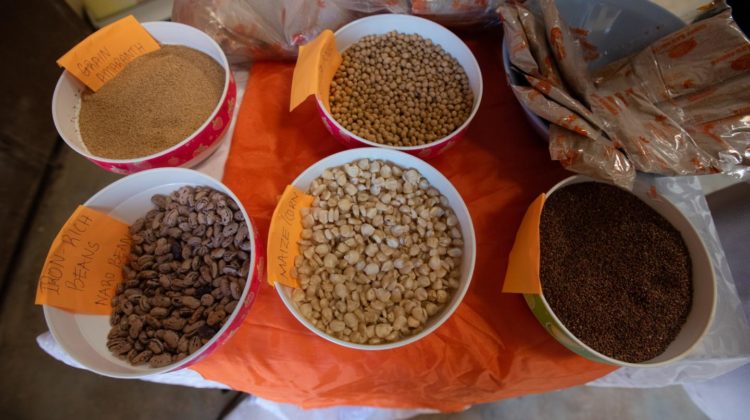Malnutrition remains a serious problem for many people in East Africa; poor consumers are willing to pay a premium for healthier foods, pointing to a new strategy for improving nutrition at a large scale

Credit: Sean Mattson / CIAT
Ugandans and Kenyans in poor urban households are willing to pay a premium for more nutritious flour, new research shows. The study, led by the International Center for Tropical Agriculture (CIAT), addresses huge knowledge gaps on consumers in urban slums and their interest in buying motivated nutritionally enriched foods.
“The study was by Africa’s high rates of malnutrition, especially in urban informal settlements,” said Christine Chege, a scientist at CIAT and the study’s lead author. “Producing nutritious foods affordable to this consumer category, especially women and children who are highly hit by malnutrition, could assist in changing this narrative.”
Although consumers in urban informal settlements, at the so-called base of the pyramid (BoP), tend to spend about 60 percent of their income on food, they often remain undernourished. Enriching staple foods with commodities rich in vitamins, iron, zinc and minerals is a way to tackle malnutrition. The researchers tested whether poor families living in the capitals of Uganda and Kenya (Kampala and Nairobi) are willing to pay more for more nutritious porridge flour, a key food item in their daily diets. The study was published in Food Policy in August 2019.
“Soft porridge is widely used to complement children’s food and it is widely consumed by lactating and pregnant women in East Africa,” said Chege.
About 94 percent of consumers in both countries would pay a premium for more nutritious porridge flour, results show, with the richer Kenyans willing to pay a higher price compared to Ugandans. However, in Uganda, where porridge has a bigger role in the diet, about 64 percent of people would pay at least 50 percent more for the better flour.
In Uganda, informing people about the flour’s nutritional benefits plays an important role in convincing them to pay the premium, the researchers found. For Kenyans, higher nutritional benefits are not a significant selling point for the enriched flour. However, the latter have more spending power to purchase a more expensive product.
Older family heads would also pay more than younger ones, researchers observed. The same stands for households with young children, as they are more aware of the nutrients their offspring need to develop.
Policy possibilities
The original diet of consumers plays a big role in determining whether they will purchase more nutritious foods, the study shows. People who already ate a more nutritious porridge flour – containing millet and other ingredients besides maize – were more open to a premium price, as they already knew some of the benefits of consuming a better food. In Kenya, improved flour contained maize, beans, bananas, orange-fleshed pumpkin, carrots and amaranth leaves; in Uganda, it included maize, soybean, amaranth, beans and moringa leaves.
More expensive improved porridge flour has the potential to succeed in Ugandan and Kenyan markets, as only three percent of consumers would require a discount to buy it, the researchers observed. This openness to better nutrition could allow policymakers to successfully promote the consumption of a more diverse diet among the urban poor, the study concludes. More demand for enriched foods would also boost the demand for individual agricultural commodities used for the enriched product, bringing more income to farmers but also could have the potential to improving their nutrition through consumption of those commodities.
“In Africa, we need to go beyond having filled bellies and think more on what can be done to avoid hidden hunger like micronutrient deficiencies and overnutrition,” said Chege. “Providing nutrition information to consumers on what foods are nutritious and what they need to consume will hugely contribute to reducing malnutrition problems. If consumers are provided with the right nutrition information, they will be willing to pay even if a little bit more for nutritious food; also they can make efforts to check on the kind of food they consume, as long as the foods are available and accessible to them.”
###
Acknowledgments
The authors gratefully acknowledge funding by the German Federal Ministry for Economic Cooperation and Development (BMZ), Germany, through the project number 15.7860.8-001.00 “Making Value Chains Work for Food and Nutrition Security of Vulnerable Populations in East Africa,” led by the International Center for Tropical Agriculture (CIAT). The authors also thank the Kenya Agricultural and Livestock Research Organization (KALRO) and the National Agricultural Research Organization (NARO) in Uganda for their cooperation and support during the fieldwork, and Mario Mazzocchi and two anonymous reviewers of this journal for their constructive comments.
Media Contact
Sean Mattson
[email protected]
57-311-784-7652
Related Journal Article
http://dx.





